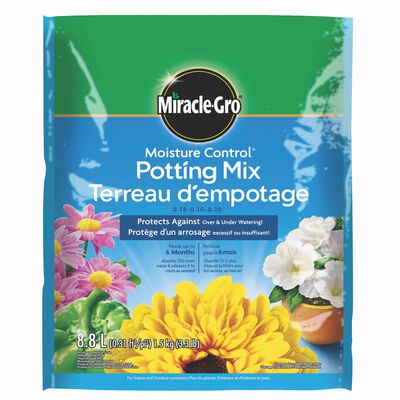
How to Grow Brussels Sprouts
- Plant Brussels sprouts 6-10 weeks before the first expected frost.
- Select a site with full sun and rich soil.
- Sow seeds of Brussels sprouts 3-4 inches apart or plant seedlings 18-24 inches apart.
- Provide Brussels sprouts with steady, consistent moisture.
- Begin fertilizing a month after planting.
- Keep an eye out for cabbage worms and treat them promptly.
- Harvest Brussels sprouts when sprouts are 1-2 inches in diameter.
Brussels sprouts have made a comeback as the "it" food during the winter season. Gone are Grandma's mushy and bland Brussels sprouts. Today's chefs and home cooks are all about roasting the vegetables to crispy perfection in a hot oven or pan-frying them with garlic and bacon. Sure, you can buy Brussels sprouts at the store, but they're so easy to grow that's it's worth the space and (minimal) effort to raise your own. Here's how to grow Brussels sprouts.
When to Plant Brussels Sprouts
Brussels sprouts grow best in cool weather, but they will sprout from seed when soil temperatures are between 45 and 80 degrees. Because Brussels sprouts take a while to grow, it makes sense to get a jumpstart on growth by planting young plants, instead of seeds. If you do choose to grow from seed, direct-sow into the garden in mid to late summer for a fall harvest. Plant seedlings in the garden 6-10 weeks before the first expected frost. Gardeners in cooler areas can grow a spring crop if they plant them outside as soon as the soil is workable.
Where to Plant Brussels Sprouts
Brussels sprouts thrive in full sun, and in rich, consistently moist soil. Because Brussels sprouts and other plants in the cabbage family (such as kale, collards, or broccoli) are susceptible to such a wide range of soil-borne diseases, it's a good idea to rotate among various areas of the garden each season. Don't plant Brussels sprouts where you last grew anything in the cabbage family.
How to Prepare the Soil for Brussels Sprouts
These vegetables are big eaters, so you'll need great soil for a good harvest. Improve the soil where you're planting Brussels sprouts by mixing a 3-inch layer of Miracle-Gro® Garden Soil All Purpose in with the top 6 inches of existing soil. If growing Brussels sprouts in pots, plant them in Miracle-Gro® Moisture Control® Potting Mix. Both contain nutrient-rich, aged compost, so either way, you will be giving the plants a major head-start on nutrition.
How to Plant Brussels Sprouts
Sow seeds one-fourth to one-half inch deep, 4 inches apart in rows or in raised beds. It takes seeds up to a week to sprout. Thin seedlings to 1-2 foot spacing after they have two sets of leaves. When planting with starter plants, space them 18 to 24 inches apart in the garden. Water thoroughly after planting, then add 2-3 inches of mulch around the base of each plant to help the soil retain moisture and keep weeds down by blocking access to the sun.
It is not necessary to stake Brussels sprouts at the time of planting. If you find that maturing plants are getting top-heavy and prone to flopping over, stake each plant individually with a thick bamboo stake, wooden stake, or piece of rebar and a loose piece of twine.
How to Water Brussels Sprouts
Regular water is the key to big Brussels sprout harvests. If the soil gets too dry, the sprouts will shrivel and not develop fully. Check the soil regularly and water when the top inch is dry.
How to Feed Brussels Sprouts
For an ultra-successful garden, use Miracle-Gro® soil and plant food together to create the ideal nutrition-filled growing environment. A month after planting, begin feeding Brussels sprout plants. Miracle-Gro® Shake 'N Feed® Tomato, Fruits & Vegetables Plant Food is an excellent choice because it will deliver continuous food for up to 6 weeks, plus it feeds the soil to make nutrients even more available to your plants. Shake plant food evenly onto soil, following label directions, then water.
How to Get Rid of Cabbage Worms
As with all cabbage family plants, Brussels sprouts are particularly susceptible to cabbage worms (caterpillars). To control, check plants regularly and remove worms by hand, then squish them or drop them into a bowl of soapy water. Or, dust plants with Bt (Bacillus thuringiensis) throughout the growing season, making sure to reapply after rain.
How to Harvest Brussels Sprouts
Sprouts will begin to ripen from the ground up after 80-90 days. Snip off sprouts when they are 1-2 inches in diameter, starting at the bottom of the plant and working up. Leaves will sometimes turn yellow as the plants mature. Snip off those leaves. Store unwashed Brussels sprouts in the refrigerator.
Ready to start growing Brussels sprouts? Click on any of the product links above for more information, to purchase the product online, or to find a retailer near you.


